-
Page 1
POWER & CONTROL OPTIMUS EPS EA1000, EA1100 Electronic Power Steering with Electric Actuator Installation and User Manual — Book 54 WARNING Cancer and Reproductive Harm [REVISION B] Form No. 682220 | ©2020 Dometic Corporation www.P65Warnings.ca.gov…
-
Page 2
©2020 Dometic All Rights Reserved. This document, subject matter and all information herein is the sole, exclusive and confidential property of Dometic and shall not be disclosed, copied, reproduced or used in whole or in part for any purpose other than as specifically authorized in writing by Dometic.
-
Page 3: Table Of Contents
Table of Contents 1 Important Safety Information ……….1-1 1.1 Explanation of symbols ………… 1-1 1.2 Safe operation …………… 1-2 1.3 Safety considerations for installers ……..1-3 1.4 Safety Decal …………..1-4 2 System Overview …………..2-1 3 Using Your EPS System …………3-1 3.1 Before first use ……………
-
Page 4
5.4 Electronic helm …………. 5-9 5.4.1 Planning ………….. 5-10 5.4.2 Helm installation ……….5-10 5.5 CANtrak display …………5-15 5.5.1 Planning ………….. 5-15 5.5.2 Installation …………5-15 5.6 Electrical connections ……….. 5-16 5.6.1 Power connection ……….5-16 5.6.2 CAN1 connection ……….5-20 5.6.3 CAN2 connection ……….
-
Page 5: Important Safety Information
If you have any questions about safe installation or operation of this system, contact Dometic Marine. Please don’t guess. 1.1 Explanation of symbols The symbols below are used throughout this publication to alert you to potential hazards involved with the operation and installation of this product.
-
Page 6: Safe Operation
• Know and obey all applicable federal, state, and municipal laws and regulations that govern boating in your area. Dometic recommends all boat operators take a boating safety course. • Never operate a boat while under the influence of drugs or alcohol.
-
Page 7: Safety Considerations For Installers
– refer also to those instructions. • Do not substitute any component of the system. Dometic and Optimus parts are rigorously engineered and tested to ensure system integrity. Substitution of components may compromise safety, performance, and reliability.
-
Page 8: Safety Decal
1.4 Safety Decal The electric actuator is shipped with a decal that warns of safety hazards and contains some instructional information. In the event the decal has been damaged, or is otherwise illegible, the decal is reproduced here. Figure 1-1. Safety Decal.
-
Page 9: System Overview
2 System Overview Optimus EPS with Electric Actuator is the marine industry’s first fully electric, retrofittable, steer-by-wire system for outboard engines. This premium system is engineered for simple installation, with fewer parts than our standard electro-hydraulic EPS, no hoses to route, and no hydraulic system to purge.
-
Page 10
• CAN2 is a high-speed network used to communicate with a third-party autopilot, and with a joystick and shift/throttle controls on an Optimus 360 joystick control system. Use of this network is optional on single- engine systems. • CAN3 is a public network using the NMEA 2000 protocol. The Optimus system broadcasts public messages onto this network and monitors the network for engine RPM.
-
Page 11
CAN1 HUB** SWITCH PANEL* ELECTRIC ACTUATOR ELECTRIC ACTUATOR BREAKER* BREAKER* – – STARBOARD * COMPONENTS NOT SUPPLIED PORT POWER BY DOMETIC POWER SOURCE* ** CAN1 HUB AVAILABLE MID 2020 SOURCE* Figure 2-1. Optimus EPS system diagram, single station, twin engine.
-
Page 12
CAN1 HUB** SWITCH PANEL* ELECTRIC ACTUATOR ELECTRIC ACTUATOR BREAKER* BREAKER* – – STARBOARD * COMPONENTS NOT SUPPLIED PORT POWER BY DOMETIC POWER SOURCE* ** CAN1 HUB AVAILABLE MID 2020 SOURCE* Figure 2-2 Optimus 360 system diagram, single station, twin engine.
-
Page 13: Using Your Eps System
3 Using Your EPS System 3.1 Before first use Before operating your boat for the first time, take a few moments to: • Familiarize yourself with the location and function of the steering system components. Review the system overview in section 2 to learn about the components and where to find them.
-
Page 14: Interference Check
4. Verify shift and throttle response at all control levers. Check that all control levers operate freely and cause the engines to shift accordingly. Put the engines in neutral idle mode and confirm that the throttle responds correctly and returns to idle. If your engine’s shift and throttle are cable operated, check all cables for signs of wear or damage.
-
Page 15: System Operation
3.2 System operation Always perform the system inspection described in section 3.1.1 before using your boat. WARNING! WARNING! Do not operate the boat if any component is not in proper working order. Do not operate the boat if any component is not in proper working order. It may result in a loss of steering control, which could lead to a collision It may result in a loss of steering control, which could lead to a collision and/or ejection from the boat, causing property damage, personal injury,…
-
Page 16: Cantrak Display
3.3 CANtrak display The Optimus CANtrak display has an easy to navigate menu system, adjustable backlighting for night use and includes a cover to protect it from the sun when not in use. Figure 3-1. CANtrak display, All Helms Active screen. The CANtrak display serves these purposes: 1.
-
Page 17: Cantrak Display Navigation
3.3.1 CANtrak display navigation The five buttons at the bottom of the unit are used to select various actions. The five boxes at the bottom of the display screen indicate the legend for each button. These legends vary based on what is on the screen. Figure 3-2.
-
Page 18: Cantrak Display Map — All Helms Active
3.3.2 CANtrak display map — All Helms Active (normal steering mode) The following diagram shows the progression from the Splash Screen to the All Helms Active Screen, then illustrates the various choices available Splash Screen from the All Helms Active screen. 3 SEC INTERVAL INFO NEXT…
-
Page 19: All Helms Active Screen
The Steering Maintenance screen allows user access to actuator calibration and move functions. We recommend that you use these functions only under the direction of a Dometic technical support representative. Calibration is required if you used the emergency manual override procedure.
-
Page 20: Settings Screen
3.3.5 Settings screen* If the boat builder (or dealer) has enabled this menu option, the Steering Settings screen allows adjustment of steering effort and helm turns. To get to the screen, select Settings from the Menu, then select Steering. You will be prompted to save changes when you exit.
-
Page 21: Speed Sensitive Steering
3.3.6 Speed sensitive steering A key advantage of Optimus electronic power steering is the ability to change steering parameters as boat speed changes. Both the steering effort and helm turns are smoothly adjusted between their low and high speed settings as the boat speed changes. Figure 3-8 illustrates how this works. Low and high boat speed is defined by engine RPM using values determined by the boat builder or the dealer that installed the system.
-
Page 22: Autopilot Operation
3.4 Autopilot operation In addition to seamless compatibility with the innovative Dometic SeaWays autopilot and SeaStation virtual anchor, Optimus EPS is designed to interface with several autopilot controllers. See the documentation with your autopilot system for specific model compatibility and user instructions. If your boat is equipped with SeaWays or SeaStation, refer to the instruction manual (Book 67) for user instructions.
-
Page 23: Joystick Operation (If So Equipped)
3.5 Joystick operation (if so equipped) The joystick is the primary user interface for the optional Optimus 360 Joystick Control System. It offers the ultimate control of the vessel for docking and maneuvering at slow speeds and is especially useful in confined or difficult circumstances.
-
Page 24
The LED on the Take Command button is used to indicate joystick status: LED State Joystick Status joystick is inactive Steady blue joystick has control of the vessel Slow flashing blue joystick is initializing rudder and EST system Alternating red and joystick has control of the vessel, but there is an blue flashing active non-critical warning fault*…
-
Page 25
NOTICE! In the event of an engine stall, only the Forward/Reverse mode is available. Restart stalled engine or switch to conventional controls. PRIMARY MOTION — FORWARD/REVERSE CORRECTION — ROTATE TO STEER Figure 3-10. PRIMARY MOTION — SIDEWAYS CORRECTION — ROTATE TO BIAS HEADING PRIMARY MOTION —…
-
Page 26: Joystick Tips
PRIMARY MOTION — ROTATION CORRECTION — FORWARD/ REVERSE TO BIAS ROTATION Figure 3-12. 3.5.2 Joystick tips 1. Plan out your joystick maneuvers before you approach your target: a) Keep it simple — Minimize diagonal and other complex maneuvers. This allows for better boat correction and control. b) Know your boat’s limitations —…
-
Page 27: Joystick Operation Examples
3.5.3 Joystick operation examples Example 1 Make the primary action move first and then adjust the boat motion with a secondary joystick motion. Example: the boat is parallel to the dock and you wish to move the boat against the dock. This is like parallel parking a car. 1.
-
Page 28
3b. If the boat does not stay centered due to wind or current while holding the joystick to the side, just push or pull the joystick fore aft to correct. 4. Once close to the dock, return the joystick to the center position. CURRENT Figure 3-17.
-
Page 29
3. As the boat approaches the slip pull the joystick backwards to stop the boat in front of the slip. Return the joystick to the home position when the boat stops. 4. Rotate the joystick to turn the boat and align it with the slip. Use a straight port or starboard move of the joystick if necessary to realign the boat.
-
Page 30: Returning To Conventional Operation
3.5.4 Returning to conventional operation The Optimus 360 joystick control system is designed to work with a variety of different EST systems provided by different engine manufacturers. Each manufacturer has a unique transfer routine to switch from joystick control back to conventional shift and throttle control, shown in the table below. NOTE The joystick must be in neutral position before transferring control.
-
Page 31: System Faults And Hazards
4 System Faults and Hazards Optimus EPS has robust fault handling and notification systems to assist you in the rare event a fault occurs. Please review this section before using your boat for the first time. NOTE When a serious fault occurs, consider your options. While the system has many features to allow the boat to return to port in a slow and safe manner, local conditions and operator skills may dictate that calling for assistance is the prudent thing to do.
-
Page 32: Danger Fault Handling
Active Fault Description Zone System Status Zone Fault Handling Instructions Zone Will appear if multiple faults are active to allow user to scroll through Figure 4-1. Danger fault screen layout. Active Fault Description Zone Provides details specific to the system fault. These will include a brief description of the fault and are primarily for troubleshooting purposes.
-
Page 33
Limp Home Mode 1 This mode occurs when the system cannot steer any of the engines. The CANtrak will instruct you to manually center the engines if necessary (see section 4.3.2) and proceed to port immediately using shift and throttle controls to steer the boat.
-
Page 34: Emergency Manual Steering Override
4.3.2 Emergency manual steering override NOTICE! If you manually reposition a steering actuator: • it must be recalibrated before returning to normal operation . Recalibration can be done through the CANtrak Maintenance menu, but it is recommended that the recalibration be performed by an authorized dealer whenever possible.
-
Page 35: Warning Fault Handling
4.4 Warning fault handling Under a warning fault the system will remain operable. Some faults may cause steering to respond more slowly to steering inputs, so use caution. Although the system may operate normally under many warning faults, you should still return to port and service the system immediately. WARNING! Proceed with caution until the fault is corrected and normal steering operation resumes.
-
Page 36
This page left intentionally blank.
-
Page 37: Installation
5 Installation 5.1 Before you start Installation of the Optimus system must be performed by a Dometic- authorized technician. To ensure proper installation and maintenance of this steering system: • Familiarize yourself with the system and review the entire installation procedure before you start installing components.
-
Page 38: Planning
5.2.1 Planning It’s important to consider the harness routing when preparing to install the actuator. The harness exits the starboard side of the actuator on all configurations and must have enough slack to accommodate both the steering movement and the trim/tilt movement. The minimum bend radius for the harness is 3.5”…
-
Page 39
7. Place the stainless steel washers (item 11) and the plastic spacers (items 7 &  on the support rod in the order shown in the drawing. To prevent metal-to-metal contact, use only the supplied plastic spacers. NOTICE! Incorrect orientation of support rod spacers may result in reduced or non-symmetrical steering range, leading to an inability of the system to calibrate.
on the support rod in the order shown in the drawing. To prevent metal-to-metal contact, use only the supplied plastic spacers. NOTICE! Incorrect orientation of support rod spacers may result in reduced or non-symmetrical steering range, leading to an inability of the system to calibrate.
-
Page 40
ENGINE YEAR MODEL ACTUATOR NOTE MANUFACTURER YAMAHA 2010 TO DATE F150—F300 4.2L V6 EA1000 See below 2010 TO DATE F350 5.3L V8 EA1000 See below MERCURY 2019 TO DATE ALL 150+ with CMS EA1000 See below HONDA 2010 TO DATE BF150—BF250 EA1000 See below…
-
Page 41: Ground Strap Installation
5.2.3 Ground strap installation You must install the ground strap on the Electric Actuator to reduce the risk of corrosion from stray currents. Refer to the installation diagram and observe the following guidelines: • Install the ground strap to the actuator on the starboard side, the same side as the harness cable exit.
-
Page 42: Actuator Harness
5.3 Actuator harness This section deals with the selection and physical installation of the actuator harness. Harness connections are shown in section 5.6. Planning 5.3.1 The actuator harness, ordered separately from the actuator, is a bundle of three cables: two DC power supply cables and a communications cable with multiple pigtails.
-
Page 43
2. Loosen the cord grip nut so that it can slide over the harness. Feed the harness through the hole in the transom until the bulkhead plate contacts it. Fasten the bulkhead plate to the transom using three screws (not supplied). 3.
-
Page 44: Harness Protection
5.3.3 Harness protection The actuator harness consists of three cables terminated at a single molded connector at the actuator end. For a tidy and reliable installation, the three cables must be properly bundled together in the splashwell. There are two methods you can use: 1.
-
Page 45: Harness Connection To Actuator
5.3.4 Harness connection to actuator 1. Remove the shipping caps from the harness connector and the Electric Actuator. 2. Apply a light coat of the supplied dielectric grease to the connector seal and the pin slots at the end of the harness. See figure 5-5. 3.
-
Page 46: Planning
5.4.1 Planning Before mounting the helm, you must be certain that you can route and connect the CAN1 harnesses in such a way that they remain within the maximum length and meet all requirements for system integrity. Review section 5.5.2 before you proceed. It lists the relevant harness and connection requirements.
-
Page 47
5.4.2.1 Front Mount helm (EH1512) Figure 5-7. Ground strap: install one end of the ground strap between the nut and washer on the helm’s mounting stud as shown. Connect the other end to a ground point on the boat. This could be a negative bus bar, the negative terminal of the battery, or a designated grounding terminal.
-
Page 48
5.4.2.2 Sport Plus Tilt helm (EH1532) Figure 5-8. Ground strap: install one end of the ground strap between the nut and washer on the helm’s mounting stud as shown. Connect the other end to a ground point on the boat. This could be a negative bus bar, the negative terminal of the battery, or a designated grounding terminal.
-
Page 49
5.4.2.3 Classic Tilt helm (EH1552) 4X WASHER 4X LOCK NUT Figure 5-9. Ground strap: install one end of the ground strap between the nut and washer on the helm’s mounting stud as shown. Connect the other end to a ground point on the boat. This could be a negative bus bar, the negative terminal of the battery, or a designated grounding terminal.
-
Page 50
5.4.2.4 Rear Mount helm (EH1572) Figure 5-10. Ground strap: install one end of the ground strap between the nut and washer on the helm’s mounting stud as shown. Connect the other end to a ground point on the boat. This could be a negative bus bar, the negative terminal of the battery, or a designated grounding terminal.
-
Page 51: Cantrak Display
5.5 CANtrak display 5.5.1 Planning There are two color CANtrak displays available, as shown in table 5-4. All displays are identical and can be used at any station. DISPLAY FOR USE WITH NOTES PART NO. ED1700 Twin, triple, and Comes with harness CM21504 for quad outboard connection to both CAN1 and CAN2 vessels…
-
Page 52: Electrical Connections
Figure 5-12. 5.6 Electrical connections All system connections are made from the Electric Actuator harness bundle, which has the following connections: 1. 12V power a. +ve (red) b. –ve (black) 2. Communication bundle a. CAN1 b. CAN2 (optional on single-engine systems) c.
-
Page 53
NOTE: Typical Source Connections • Direct to the batteries. • To battery switches. (Never switch the negative wire.) • To a bus bar or power distribution panel. Ensure the wire size from the bus to the batteries is sufficient to handle the peak current of all devices connected to the bus.
-
Page 54
(inboard pair or outboard pair) the position of the switches is not important because one charging battery will always be connected to the actuator. NOTE To make your system as error-proof as possible, Dometic recommends the use of automatic charging relays in multi-engine applications. PORT ACTUATOR STARBOARD ACTUATOR…
-
Page 55
PORT ACTUATOR STARBOARD ACTUATOR PORT CENTER PORT CENTER STARBOARD STARBOARD ENGINE ENGINE ENGINE ENGINE Breaker Breaker – – – – PORT CENTER PORT CENTER STARBOARD STARBOARD 12V BATTERY 12V BATTERY 12V BATTERY 12V BATTERY Figure 5-15. 5.6.1.2 Making your 12V power connections 1.
-
Page 56: Can1 Connection
• The harness length to the farthest device may not exceed 120ft (36m) in total. The pages that follow present some sample connection diagrams to help you determine the harnesses that you need. It’s not possible to show every possible configuration, so please contact Dometic technical support if you need assistance. 5-20…
-
Page 57
CAUTION! Do not exceed the maximum harness length or use more than two extensions. Doing so may cause excessive voltage drop in the CAN bus and lead to communication failures. NOTE • Every harness connection is a potential failure point. Minimize the number of connections in your system and locate them in dry areas protected from incidental physical damage.
-
Page 58
STATION 2 STATION 1 HARNESS CM204XX WYE HARNESS CM21702 EXTENSION HARNESS CM20036, OR CM22401 ACTUATOR PLUS CM 204XX Figure 5-17. Single Engine, Dual Station. 5-22…
-
Page 59
STATION 2 STATION 1 HARNESS CM204XX CAN1 HUB* CM204XX PORT ACTUATOR STARBOARD ACTUATOR WYE HARNESS CM21702 * CAN1 HUB AVAILABLE MID 2020 Figure 5-18. Multi-Engine, Dual Station, Option 1. Hub available Mid 2020. 5-23…
-
Page 60
STATION 2 STATION 1 HARNESS CM204XX WYE HARNESS CM21702 PORT ACTUATOR EXTENSION HARNESS CM20036, OR CM22401 PLUS CM 204XX STARBOARD ACTUATOR WYE HARNESS CM21702 Figure 5-19. Multi-Engine, Dual Station, Option 2. 5-24…
-
Page 61
5.6.2.2 Installation Harness routing It is important to route all CAN1 harnesses in a way that protects them from standing water, physical damage, from being stepped on, or from being pulled. Best practice is to run the harness through PVC conduit. Use tie wraps or other means to secure harnesses at all connection points, at entry and exit from rigging conduit, and at regular intervals along its length if you do not have rigging conduit.
-
Page 62: Can2 Connection
CAN2 connection The CAN2 network is used to connect the CANtrak display and a third- party autopilot that is certified by Dometic to work with the EPS system. The CAN2 network is optional on single-engine systems; if you are not using an autopilot, leave the cap on the harness connector, coil the harness, and secure it out of the way.
-
Page 63
5.6.3.1 Planning You will need to build a small CANbus network with a node (tee connector) for each actuator, each display, and for the autopilot. Locate the nodes close to the devices and use an extension harness to create a network backbone. Your network will look similar to figure 5-22 (only one actuator is shown, but you will need to connect both in a multi-engine system).
-
Page 64
Micro-c DeviceNet harness Description Length, ft (m) Part No. Micro-C Extension, Male/Female 1 (0.3) CM10001 3 (0.9) CM10003 6 (1.8) CM10006 9 (2.7) CM10009 12 (3.6) CM10012 16 (4.9) CM10016 20 (6.1) CM10020 30 (9.1) CM10030 Table 5-7. 5.6.3.2 Installation 1.
-
Page 65: Can3 Connection
5.6.4 CAN3 connection (Engine RPM) The CAN3 connector on the SCU harness is used to get the engine RPM signal from an NMEA 2000 network. The Optimus system will also broadcast data, such as rudder position. You have two options to make this connection: Use existing bus: if the boat already has a NMEA 2000 bus with an RPM signal on it, you can simply connect the CAN3 harness to an available DeviceNet tee on the bus.
-
Page 66: Ignition Sensing
5.6.5 Ignition sensing The Electric Actuator harness has a single purple ignition-sensing wire that must be connected to an ignition source (has system voltage when ignition is on). This wire provides the wake-up signal to the Electric Actuator; the steering system will not work without it. NOTE: Multi-engine applications The electric steering actuators also receive a wake-up signal over the CAN1 network, so both actuators will be on as long as one of the ignition-…
-
Page 67
OPTION 1 – Splice into an existing engine ignition wire TWIST WIRES TOGETHER TO ACTUATOR IGNITION SOURCE TO ENGINE MOLEX PERMA-SEAL STEP DOWN BUTT SPLICE P/N 0191640043 OR EQUIVALENT Figure 5-26. Application specific instructions Single-engine: Connect the ignition-sensing wire to the engine ignition. Twin-engine application: Connect the port actuator sensing wire to the port ignition and the starboard actuator sensing wire to the starboard ignition.
-
Page 68
This page left intentionally blank. 5-32…
-
Page 69: Setup And Configuration
6 Setup and Configuration Before the Optimus EPS system can be used it must be configured. At a minimum, you need to do the Initial Setup and the Steering Setup. In the Initial Setup you will specify the type of system you are configuring, as well as the number and location of the devices that are installed.
-
Page 70: Initial Setup
6.2 Initial setup Initial Setup is performed from the System Setup screen. Navigate to Dealer Menu > Initial Setup > System and you will see the setup steps presented in order on the display. It is important to perform these steps in the order shown.
-
Page 71: Select Steering Type
6.2.2 Select steering type Select Outboard Optimus Electric from the list, as shown in figure 6-3. Figure 6-3. 6.2.3 Select number of devices The CANtrak will display a list of devices based on the system type. Use the + and – buttons to change the quantity of each device to match the system. These parameters tell the system how many of each device to look for on the CAN network.
-
Page 72: Steering Setup
Configuration (optional) Skip this step unless you have installed an engine wedge kit (such as Dometic P/N HA5495). Engine wedges are angled shims installed between the engine mounting bracket and the transom to toe-in the engines. Increased toe-in angle will give better joystick performance on hulls with widely spaced engines, such as pontoon boats or catamarans.
-
Page 73
Figure 6-5. 2. The screen will prompt you to steer back and forth to check the actuator instancing. Only the starboard actuator should move. If the port actuator moves, you must correct the instancing or damage may result. Press Setup to return to the system setup screen. Figure 6-6.
-
Page 74
3. Once you’ve verified that only the starboard actuator moves, press Proceed to enter calibration mode. The display will prompt you through the calibration procedure. Follow the instructions on screen, as shown in figure 6-7. Keep turning in the indicated direction until the screen prompts you to stop or change direction.
-
Page 75: Set Proportional Sensitivity
6.3.3 Set Proportional Sensitivity Proportional rudder sensitivity is an optional parameter used to increase the helm sensitivity at the neutral rudder position for more responsive steering. The total number of helm turns lock-to-lock is unchanged, so the steering becomes less sensitive as you approach hard over. Proportional Sensitivity is set in Steering Setup >…
-
Page 76
If the actuators are calibrated, backing out of the Move Steering mode and turning the helm will cause the actuators to auto-align. Figure 6-10. Figure 6-11.
-
Page 77: Maintenance And Troubleshooting
• Check for mechanical play or slop throughout the steering system. Correct as required. • Inspect for signs of corrosion. Contact Dometic if more than superficial spotting is found. • Check all harnesses (not just the actuator harness) for signs of chafing or wear.
-
Page 78: Troubleshooting Guide
Every 200 hours (or twelve months, whichever comes first) • All points noted above • Remove support rod from the engine tilt tube and clean the support rod, support brackets and tilt tube. • Grease the support rod liberally with a good quality marine grease and re-install.
-
Page 79: Helm Templates
Appendix A A.1 Helm templates A.1.1 Front Mount Helm (EH1510/EH1512) NOTICE! If this template has been downloaded electronically or copied from another document, please verify all template dimensions prior to cutting. Print/copy reproductions may be scaled differently. Figure A-1. Front Mount Helm Template.
-
Page 80
This page left intentionally blank.
-
Page 81: Sport Plus Tilt Helm (Eh1530/Eh1532
A.1.2 Sport Plus Tilt Helm (EH1530/EH1532) NOTICE! If this template has been downloaded electronically or copied from another document, please verify all template dimensions prior to cutting. Print/copy reproductions may be scaled differently. Figure A-2. Sport Plus Tilt Helm Template.
-
Page 82
This page left intentionally blank.
-
Page 83: Classic Tilt Helm (Eh1550/Eh1552
A.1.3 Classic Tilt Helm (EH1550/EH1552) NOTICE! If this template has been downloaded electronically or copied from another document, please verify all template dimensions prior to cutting. Print/copy reproductions may be scaled differently. Figure A-3. Classic Tilt Helm Template.
-
Page 84
This page left intentionally blank.
-
Page 85: Rear Mount Helm (Eh1570/Eh1572
A.1.4 Rear Mount Helm (EH1570/EH1572) NOTICE! If this template has been downloaded electronically or copied from another document, please verify all template dimensions prior to cutting. Print/copy reproductions may be scaled differently. Figure A-4. Rear Mount Helm Template,…
-
Page 86
This page left intentionally blank.
-
Page 87: Cantrak Display Template
A.2 CANtrak display template NOTICE! If this template has been downloaded electronically or copied from another document, please verify all template dimensions prior to cutting. Print/copy reproductions may be scaled differently. OVERALL NOMINAL 3.775″ (96 mm) 0.22″ DIA. 1.88″ (5.6 mm) (48 mm) 4 PLACES 1.97″…
-
Page 88
This page left intentionally blank. A-10…
-
Page 89: Bulkhead Fitting Template
A.3 Bulkhead fitting template NOTICE! If this template has been downloaded electronically or copied from another document, please verify all template dimensions prior to cutting. Print/copy reproductions may be scaled differently. 3 x 3/16″ PILOT HOLE 1.5″ (34 mm) DIA. Figure A-6.
-
Page 90
This page left intentionally blank. A-12…
-
Page 91: Bolt Torque Specifications
Current draw, peak 40A per actuator operating Current draw, maximum 55A per actuator Circuit breaker rating 60A per actuator (not supplied by Dometic) Number of wheel turns Variable from 3.5 to 8 Steering angle Up to 30° in each direction…
-
Page 92
_______________________________________________ Notes _______________________________________________ _______________________________________________ _______________________________________________ _______________________________________________ _______________________________________________ _______________________________________________ _______________________________________________ _______________________________________________ _______________________________________________ _______________________________________________ _______________________________________________ _______________________________________________ _______________________________________________ _______________________________________________ _______________________________________________ _______________________________________________ _______________________________________________ _______________________________________________ _______________________________________________ _______________________________________________ _______________________________________________ _______________________________________________…
-
Page 93
_______________________________________________ Notes _______________________________________________ _______________________________________________ _______________________________________________ _______________________________________________ _______________________________________________ _______________________________________________ _______________________________________________ _______________________________________________ _______________________________________________ _______________________________________________ _______________________________________________ _______________________________________________ _______________________________________________ _______________________________________________ _______________________________________________ _______________________________________________ _______________________________________________ _______________________________________________ _______________________________________________ _______________________________________________ _______________________________________________ _______________________________________________…
-
Page 94
_______________________________________________ Notes _______________________________________________ _______________________________________________ _______________________________________________ _______________________________________________ _______________________________________________ _______________________________________________ _______________________________________________ _______________________________________________ _______________________________________________ _______________________________________________ _______________________________________________ _______________________________________________ _______________________________________________ _______________________________________________ _______________________________________________ _______________________________________________ _______________________________________________ _______________________________________________ _______________________________________________ _______________________________________________ _______________________________________________ _______________________________________________…
-
Page 95: Return Goods Procedure
Solutions products warranty statement. A complete warranty policy is available in our SeaStar Solutions products catalogue. For more information please visit our website: www.seastarsolutions.com/support-2/warranty-2/seastar-solutions-warranty Return goods procedure Contact our warranty department at Marine.Warranty@dometic.com for instructions. Technical support Phone: 604.248.3858 email: seastar@dometic.com…
-
Page 96
Mobile living made easy. DOMETIC VANCOUVER 3831 NO.6 ROAD RICHMOND, B.C. CANADA V6V 1P6 www.dometic.com © 2020 DOMETIC PRINTED IN CANADA 03/20 ISO 25197:2012 Please scan FORM NO. 682220 REV. B this QR code and watch our latest Boating Safety video.


















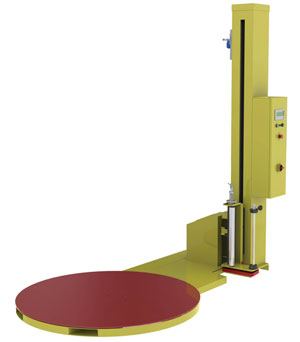
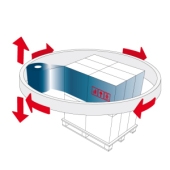
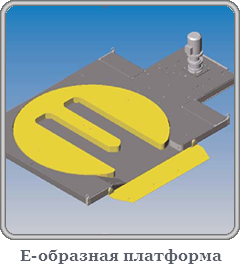
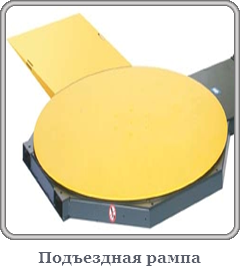
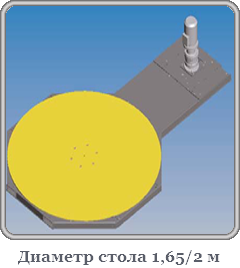

 on the support rod in the order shown in the drawing. To prevent metal-to-metal contact, use only the supplied plastic spacers. NOTICE! Incorrect orientation of support rod spacers may result in reduced or non-symmetrical steering range, leading to an inability of the system to calibrate.
on the support rod in the order shown in the drawing. To prevent metal-to-metal contact, use only the supplied plastic spacers. NOTICE! Incorrect orientation of support rod spacers may result in reduced or non-symmetrical steering range, leading to an inability of the system to calibrate. 